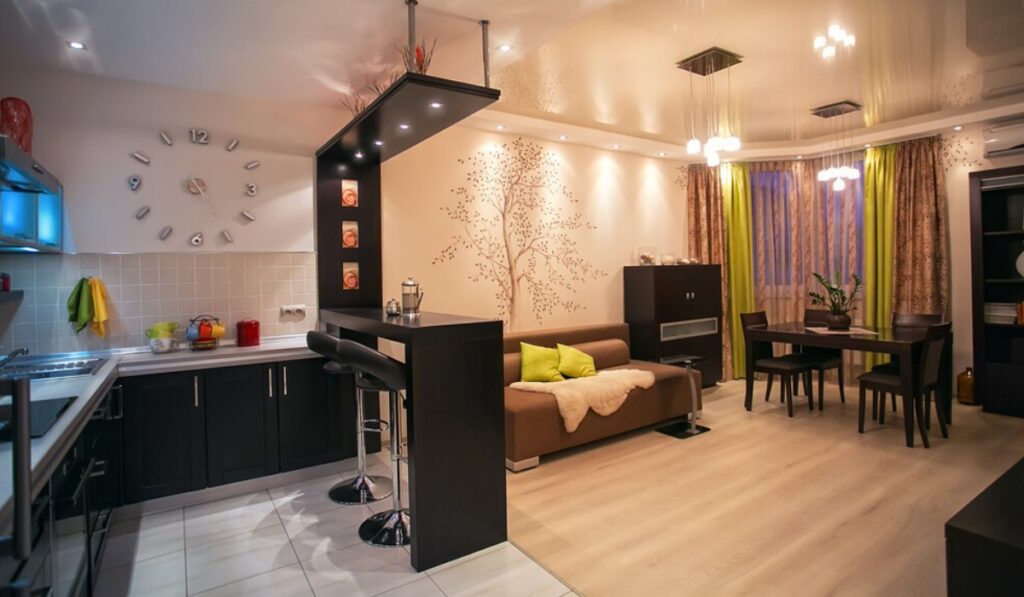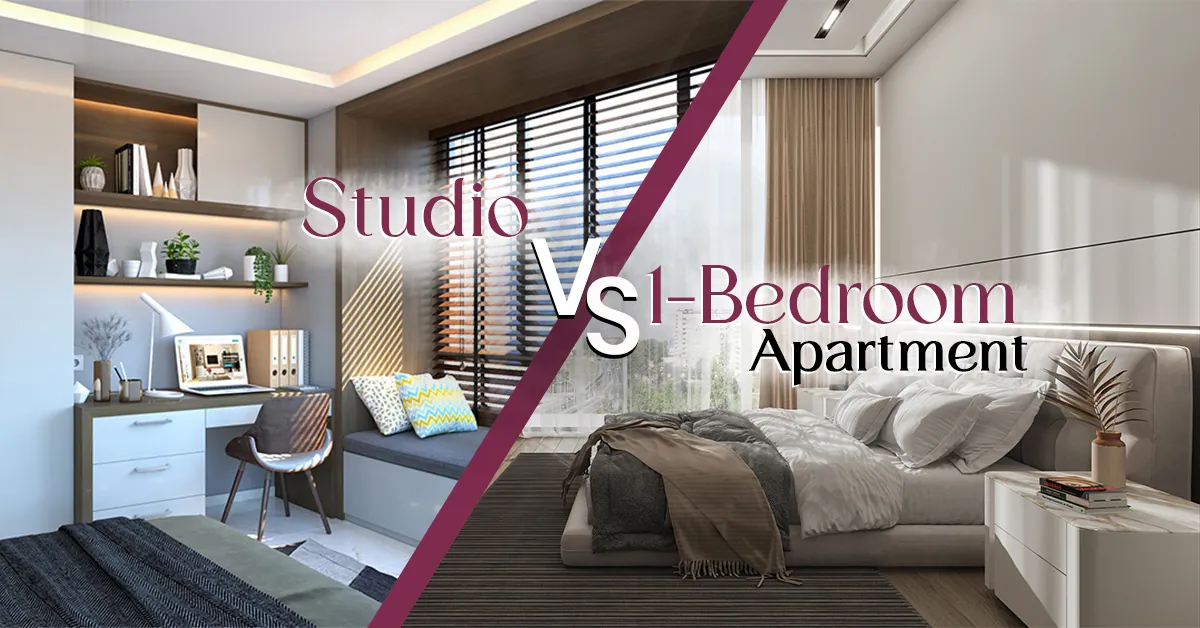Studio Apartments: The Complete Guide to Stylish, Affordable Living
Introduction: studio apartments
studio apartments Are you drawn to the idea of a cozy, compact living space that offers everything you need in one place? Studio apartments are increasingly popular for a reason! With their efficient use of space, affordability, and simplicity, studios provide a unique and stylish way to live. But with great appeal comes a unique set of challenges. How do you design for such a small space? How can you make a studio feel like home while staying organized?
In this guide, we’ll dive deep into what makes studio apartments so special and explore everything you need to know, from design tips to financial benefits. Let’s get started!
- What is a Studio Apartment?
The Definition of a Studio Apartment
A studio apartment is typically a single-room unit that combines the living area, bedroom, and kitchen into one open space. In most cases, only the bathroom is in a separate room. This type of apartment layout maximizes limited space and is particularly popular in densely populated cities where square footage comes at a premium.
How Studios Differ from One-Bedroom Apartments
Unlike one-bedroom apartments, studios do not have a separate bedroom. This makes studio apartments generally smaller and more affordable, which is ideal for single individuals or anyone seeking a minimalist lifestyle. While both types of units have their perks, studios offer a more open and versatile layout.
Types of Studio Apartments
Studios come in different styles, each with its advantages:
- Alcove Studio: Features a small nook that can be used for a bed or workspace.
- Convertible Studio: Allows you to divide spaces with partitions or temporary walls.
- Loft Studio: Often found in converted buildings with high ceilings, giving a spacious, airy feel. Understanding these types can help you choose the layout that best fits your needs.
- Pros and Cons of Studio Apartment Living
Benefits of Living in a Studio
Studio apartments have numerous advantages:
- Affordability: Studios are generally cheaper than larger units, making them a great choice for budget-conscious renters.
- Low Maintenance: With less space comes less cleaning and upkeep, which is ideal for busy professionals.
- Eco-Friendly: Reduced space often means lower energy consumption, making studios an eco-conscious choice.
Challenges of Living in a Studio
While studio apartments offer plenty of benefits, there are some challenges to keep in mind:
- Limited Space: Lack of storage and room for personal items can be challenging.
- Privacy Constraints: In a studio, there are fewer options for private areas, which may not be ideal for everyone.
- Creative Storage Needs: Finding ways to store your belongings without cluttering up the space is essential.
Is a Studio Apartment Right for You?
Ultimately, deciding to live in a studio depends on your lifestyle and needs. Those who prioritize simplicity, affordability, and efficient design often find studio apartments to be a perfect match. However, if you need more space or enjoy hosting, a studio might feel too limiting.
- Tips for Maximizing Space in a Studio Apartment
Smart Furniture Choices
Choosing the right furniture is key in a studio. Opt for multi-functional pieces:
- Sofa Beds: A sofa bed provides seating during the day and transforms into a bed at night.
- Storage Ottomans: These serve as seating and hidden storage.
- Folding Tables: A fold-away dining table saves space when not in use. Investing in versatile furniture makes it easy to maximize every inch.
Clever Storage Solutions

Effective storage is crucial in a studio. Try the following ideas:
- Wall-Mounted Shelving: Make use of vertical space for books, plants, and decor.
- Under-Bed Storage: Store off-season clothing or bulky items in under-bed containers.
- Closet Organizers: Use dividers, bins, and hooks to make closets more efficient. Clever storage not only keeps things tidy but also makes a studio feel more spacious.
Dividing the Space
While studios are open, you can create defined areas:
- Room Dividers: Bookshelves, curtains, or folding screens can separate spaces without closing them off completely.
- Area Rugs: Use different rugs to define zones, like a living area, bedroom, or dining nook.
- Furniture Arrangement: Strategically placed furniture can visually divide the space into distinct areas. Creating these divisions gives a sense of structure and functionality.
- Essential Design Tips for Studio Apartments
Choosing a Color Scheme
Color can make or break a studio’s atmosphere. Light colors generally make spaces feel larger, while dark hues can add warmth and coziness.
- Neutral Tones: White, beige, and gray are great for creating an airy and spacious feel.
- Accent Colors: Add pops of color through cushions, rugs, and art to avoid a bland look.
- Monochromatic Schemes: Sticking to one color in different shades can give the studio a cohesive look. Choose a scheme that reflects your style while enhancing the room’s feel.
Lighting for Small Spaces
Good lighting can make a small space feel more inviting. Combine multiple light sources:
- Ambient Lighting: A central overhead light brightens up the entire room.
- Task Lighting: Lamps for reading or working help set functional zones.
- Accent Lighting: String lights or wall sconces add personality and warmth. A layered lighting approach gives you flexibility and adds depth to your studio.
Adding Personal Touches
Personalizing a studio doesn’t mean over-cluttering. Instead, incorporate meaningful items:
- Artwork and Photos: Hang your favorite pieces to give the space character.
- Plants: Greenery adds freshness and life without taking up too much space.
- Unique Textiles: Throw pillows, blankets, and rugs can make a studio feel like home. These small additions let you showcase your personality without sacrificing space.
- Cost Comparison: Studio Apartments vs. Other Apartment Types
Studio Apartments vs. One-Bedroom Apartments
The most significant difference between studios and one-bedroom apartments is price. Typically, studios are more affordable than one-bedroom units, allowing renters to save on monthly costs. However, the reduced cost comes at the expense of extra space, which might be worth it depending on your budget and lifestyle.
Studio Apartments vs. Shared Living Spaces
Living in a shared apartment with roommates might reduce rent even further than renting a studio. However, shared spaces often come with compromises on privacy and personal freedom. Studios, on the other hand, offer complete independence, making them a worthwhile investment for those who value their own space.
Studio Apartments vs. Micro-Apartments
Micro-apartments are even smaller than studios but tend to be designed with efficiency in mind. They may offer amenities like communal kitchens or lounges, which studios typically don’t have. While the rent for micro-apartments may be slightly lower, studio apartments still provide more space and versatility.
- Finding the Right Studio Apartment for Your Needs
Setting Your Budget
Before you start searching for a studio, determine how much you can comfortably spend on rent. Consider not only rent but also utilities, transportation, and other monthly expenses.
Location Considerations
The location of your studio plays a significant role in your overall lifestyle. Think about proximity to work, public transit, grocery stores, and entertainment options. City studios might offer vibrant surroundings, while suburban studios tend to be quieter and more spacious.
Researching Building Amenities
Different studio apartments offer various amenities. Check if the building has essentials like laundry facilities, storage, a fitness center, or even a rooftop area. Knowing what’s available in the building can make your life easier and add extra value to your rent.
- Decorating Your Studio Apartment on a Budget
DIY Decor Ideas
Decorating doesn’t have to break the bank. With a bit of creativity, you can make your studio look stylish on a budget:
- Wall Art: Create your own art or frame photos for a personal touch.
- Plants: Succulents and small potted plants are affordable and easy to maintain.
- Throw Pillows and Blankets: These can add color and comfort without a high cost. Small investments can have a big impact on your studio’s look and feel.
Upcycling and Repurposing
Consider upcycling furniture or decor. A fresh coat of paint can breathe new life into a thrifted chair or table. Repurposing items you already own or finding deals at secondhand stores is a cost-effective way to furnish a studio.
Thrift Store Finds
Thrift stores are a great resource for unique and affordable decor. Vintage furniture, artwork, and accessories can bring character to your studio without the price tag of new items. Just be sure to check the quality and condition before buying.
- Organizing Your Studio Apartment for Maximum Efficiency
Creating Zones for Different Activities
In a studio, it’s essential to create designated zones for different activities. Arrange your furniture in a way that separates areas for sleeping, eating, working, and relaxing.
Utilizing Vertical Space
Vertical space is often underutilized in studio apartments. Install shelves, hooks, or wall-mounted organizers to make the most of the wall space. This keeps surfaces clear and helps prevent clutter.
Keeping Clutter at Bay
Minimalism is your friend in a studio. Regularly declutter and organize to keep things tidy. Invest in storage solutions like bins, baskets, and organizers to maintain order.
- Practical Considerations of Studio Living
Noise Control
With the open layout of studios, sound can easily travel, which may be a challenge if you work from home or need quiet time. Consider adding rugs or curtains to absorb sound, and communicate with neighbors if noise becomes







Post Comment